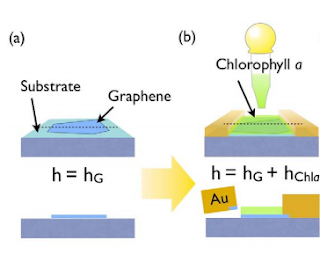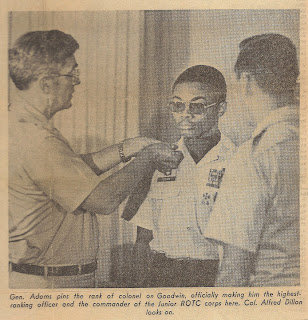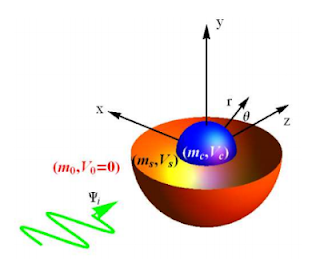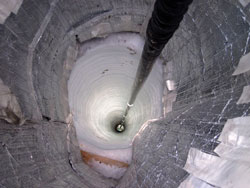Since I reposted for mom...Happy Father's Day Pop. (Chief)
“New Light Beulah was organized in December of 1867 when some 565 African Americans opted to withdraw and worship on alternate Sundays from the white members of Beulah Baptist Church. Both congregations worshipped in the same sanctuary. The eleven-member White Beulah Baptist Church worshipped on the first and third Sundays. The Black congregation of New Light Beulah worshipped on the second and fourth Sundays of each month. Prior to the organization of New Light Beulah, one other Black congregation had been organized out of Beulah Baptist. That congregation was Shiloh Baptist Church when 40 Black members withdrew on May 14, 1866. Shiloh's pastor was Reverend William Weston Adams, a former slave and member of Beulah Baptist who had been ordained November 12, 1865. Reverend Adams along with two other former slaves were ordained by Beulah's Pastor James Lawrence Reynolds shortly after the Civil War.
“New Light Beulah Baptist Church extended the call to Reverend William Weston Adams to serve as her first pastor in 1867. Reverend Adams accepted the leadership of the church as a supply pastor initially. Within one year, Reverend Adams became the permanent pastor on New Light Beulah Baptist Church, about the same time that Reverend James Lawrence Reynolds resigned as the pastor of the small Beulah Baptist Church. The Beulah Baptist Church elected Reverend Thomas Mellichamp as pastor who had a cordial relationship with Reverend William W. Adams.
“The two congregations continued to share the same sanctuary for three years until the White congregation dispersed in 1870. The Black congregation continued to flourish. Spiritual leaders of the church included Preston & Eliza Moody Richardson, John & Ann Reese Dinkins, Pharoah & Racheal Ward Smith, Robert & Hagar Green Jones, Lewis & Suckey Smith Tucker, Paul & Matilda Hopkins Sims, Simon & Mariah Tucker Jenkins, Charles & Leah Reese Howell, Ned & Phyllis Brevard Middleton and James & Tansy Smith Taylor. These leaders guided the church through its transitional period. Beulah's Black congregation desiring to assert its independence, changed it's name to New Light Beulah Baptist in 1870.
“Shortly after the White members ceased using the sanctuary, questions about legal ownership of the church property began. The members of the New Light Beulah claimed ownership, as well as former white members of Beulah Baptist Church. The continuing dispute and the distance traveled by some members resulted in more than half of the membership securing letters of dismission in 1871 to organize the Zion Benevolent Baptist Church, Hopkins, S. C. Complicating the issue of ownership even more was a dispute between Anthony Morris (Black), a member of New Light Beulah and Jesse Reese (White), a former member of Beulah Baptist Church. December 2, 1871, apparently Brother Anthony Morris purchased a cow from Mr. Reese for $34.00 placing $21.00 down with a promise of possession with payment of the balance. Brother Morris later came prepared to pay the balance, but was told by Mr. Reese that the cow was sold and there would be no refund. Consequently, conflict arose between Reese and Morris, along with several members of the New Light Beulah Baptist Church who supported Morris. Subsequently, one of Mr. Reese's cows was maimed resulting in accusations of several New Light Beulah members who were eventually tried in General Sessions Court. Tense relationships developed in the Grovewood-Congaree community between Black and White citizens.
“Animosity within the community intensified when Mr. Jesse Reese's nephew Jesse Reese Adams moved himself and family into the sanctuary formerly shared by Beulah and New Light Beulah. This was the same sanctuary that was being used by the Black members of New Light Beulah Baptist at that time. The following Sunday when New Light Beulah members arrived for worship, they found Jesse Reese Adams armed and were forced to leave the premises. The land that the sanctuary sat on was originally purchased from the Reese family in 1832.
“New Light Beulah elected Nazareth's Reverend Isom William Simons as her third pastor. Just prior to Reverend Simons arrival, the church had elected Brother Frank Smith as church clerk to replace Andrew Richbourg. However, Brother Richbourg was reelected church clerk in 1885 for 1 year. Burrell J. Goodson was elected church clerk in 1886. Isom Harrison Goodwin was then elected clerk in 1887. Frank Smith served as clerk again in 1887. New Light Beulah's clerks Smith, Goodson and Goodwin were all at one time students of Benedict Institute.
“The church purchased two acres of land from the Kaminer brothers on December 26, 1886 for $25.00. Trustees signing the deed were Abram Weston, Jacob Gallman, Pompey Smith, Thomas Stocker, Warwick Howell, Hampton Jamison and Julius Goodwin.”
Julius Goodwin was my great-grandfather. He and his brothers would take the name of Goodwin after emancipation in 1865, giving it to his wife Epsy and his children, one of which Moses Pickett Goodwin: my grandfather.
Robert Harrison Goodwin was born June 19, 1925, on the same day celebrated in Texas, nationally and internationally as
Juneteenth.
Robert lost his father Moses, a sharecropper and school teacher, at the age of three. From all descripts, a voracious reader, and that desire to learn transferred to his son. Raised by his “village” at the time, Robert would quit formal education in the 6th grade to work, bringing home money for his mother, Estelle. He would be drafted in the US Navy in a segregated squadron. He was a ship weapons expert, a cook and a Navy boxer: my first martial arts instructor. He took and passed a college entrance exam, despite his lack of formal education. He opted sadly, not to go, the challenge of the times and the need to make money for his mother, which he dutifully sent home from his meager enlisted check of $92.00.
On his departure after World War II from the Navy, he brought his clothing to a dry cleaning business in Winston-Salem, NC, where a young woman named Mildred would see him. Impressed with his looks and muscles (he was a boxer), she convinced her manager to give the person she’d eventually call “Boot” Goodwin a job. They married April 8, 1950 and Robert became an immediate father to my sister Mamie, who was 8 at the time. I came along 12 years later.
Nanos gigantium humeris insidentes – I stand on the shoulders of giants. I am here because of them. I studied physics because my great-grandfather and his brothers in their own way were fighters, and did not let challenges of violence defeat their dream; my grandfather Moses was an educator and sharecropper who provided mightily for his family; having friendships that endured after his passing and men to raise his son, and my father (Pop) mechanically gifted, brilliant and kind: enduring years of discrimination to bring home money for his family, passed over for promotions and did not let bitterness poison the dreams of his son: me.
He and my mother would help me achieve the rank of Brigade Commander of Winston-Salem/Forsyth County Schools: the highest rank in the city, and the first African American. He was instrumental in my learning the fine art of military drill with a rifle, and how to shoot both rifle and pistol, orienteering and public speaking. He and my mother were Deacon and Deaconess at
Galilee Missionary Baptist Church.
In college on my initial troubles with Calculus, Pop purchased a book on the subject; studied it for two weeks and tutored me! Problems solved.
(I attended coincidentally,
New Light Church when I lived in Austin, Texas before I knew this history or its significance.)
Happy Father’s Day, gentlemen: I thank you all.

















